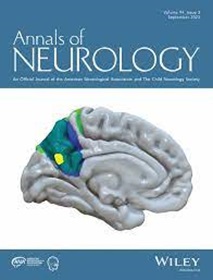Neutrophils Are Associated with Higher Risk of Incident Amyotrophic Lateral Sclerosis in a BMI- and Age-Dependent Manner
Abstract
Objective
Peripheral immune markers have been associated with the progression and prognosis of amyotrophic lateral sclerosis (ALS). However, whether dysregulation of peripheral immunity is a risk factor for ALS or a consequence of motor neuron degeneration has not yet been clarified. We aimed to identify longitudinal associations between prediagnostic peripheral immunity and the risk of incident ALS.
Methods
A total of 345,000 individuals from the UK Biobank between 2006 and 2010 were included at the baseline. The counts of peripheral immune markers (neutrophils, lymphocytes, monocytes, platelets, and CRP) and its derived metrics (neutrophil-to-lymphocyte ratio [NLR], platelet-to-lymphocyte ratio [PLR], lymphocyte-to-monocyte ratio [LMR], and systemic immune-inflammation index [SII]) were analyzed in relation to the following incident ALS by Cox proportional hazard models. Subgroup and interaction analyses were performed to explore the covariates of these relationships further.
Results
After adjusting for all covariates, the multivariate analysis showed that high neutrophil counts and their derived metrics (NLR and SII) were associated with an increased risk of ALS incidence (per SD increment hazard ratio [HR] = 1.15, 95% confidence interval [CI] = 1.02–1.29 for neutrophils; HR = 1.15, 95% CI = 1.03–1.28 for NLR; and HR = 1.17, 95% CI = 1.05–1.30 for SII). Subgroup and interaction analyses revealed that body mass index (BMI) and age had specific effects on this association. In participants with BMI ≥ 25 or age < 65 years, higher neutrophil counts, and their metrics increased the risk of incident ALS; however, in participants with BMI < 25 or age ≥ 65 years, neutrophils had no effect on incident ALS.
Interpretation
Our study provides evidence that increased neutrophil levels and neutrophil-derived metrics (NLR and SII) are associated with an increased risk of developing ALS. ANN NEUROL 2023;94:942–954

 求助内容:
求助内容: 应助结果提醒方式:
应助结果提醒方式:


